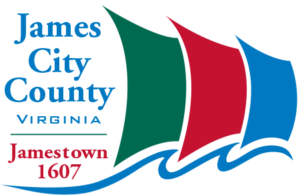The Solution
Empowering Stakeholders.
Chaired by Deputy City Manager Dave Hansen, the Joint Energy Committee was a unique partnership comprised of representatives from city departments, the City Public Schools, and even the primary utility vendor—Dominion Virginia Power. As the City’s utility cost crisis escalated, the committee was in an ideal position to initiate change.
Developing a Plan.
Through a series of monthly meetings, Committee members set the following long-term goals for achieving the first part of their mandate—energy savings:
- Monitor energy usage
- Identify energy saving projects
- Reduce building electric consumption by 10%
- Reduce energy costs
Achieving the second part of their mandate would involve a multi-faceted approach that would restructure business processes related to utility bill processing. The committee identified a project team consisting of the Energy Management Administrator and members of the Finance, Public Works, and IT departments. The team worked with other stakeholders to develop a solution that would provide favorable outcomes through:
- Improvements in internal control processes
- Elimination of shadow systems and duplicate records in various departments used to track energy costs
- Reductions in data entry errors associated with invoices and payments
- Reductions in late or incorrect payments
- Automated audit processes for approval of individual utility bills
- Increased managerial focus on bill exceptions or abnormalities
- Reductions in paper record keeping
- Improvements in records management for high volumes of invoices
- Avoidance of unnecessary delays caused by paper processes
First Steps.
The project team refined a specification for an energy accounting and management system that would track the energy data and use it to guide budgeting and conservation efforts.
CVB selected EnergyCAP UtilityManagement™ as the energy management software solution, procuring it through a competitive bid obtained from a neighboring city’s EnergyCAP contract (a timesaving process known as piggybacking).
Prior to importing three years of historical utility billing data into the new software, CVB engaged an external firm to perform an audit of the vendor payment data. This process helped improve the accuracy of the payment and credit history, reducing the possibility that future audits would be affected by errors in historical billing records.
As system specifications were clarified, City offices responded creatively to move the project forward. The CVB Finance Office played a critical role by:
- Developing the system control requirements and process controls
- Determining how the general ledger accounts and related financial fields were to be used in the energy software
- Identifying requirements for electronic payment processes and document management
- Providing input on required financial reports and invoice audit reports
- Developing testing scenarios
- Assisting with testing and acceptance of the EDI electronic invoice transfer and payment process
EDI Solutions.
Lori Herrick, in her role as Energy Management Administrator for CVB, was responsible for overseeing the implementation process. CVB’s transition to EDI (Electronic Data Interchange) involved a complex electronic information exchange that started with billing data from the commodity vendor. The EDI vendor, Xebec®, provided a formatted billing file that could be imported into EnergyCAP UtilityManagement for auditing and analytics before being exported to the CVB accounting database.
As of March, 2013, 828 of the City’s Dominion Electric utility bill accounts had been transitioned to EDI, and savings had already started, including 150 hours of monthly manual processing time. Eventually, Herrick reported, an additional 150 bills from Virginia Natural Gas will be processed electronically, leaving only about 370 monthly bills that will need to be hand keyed.
The CVB IT department played an important role in the selection and implementation of the energy management and EDI software packages. Using a consultant project manager from the City’s PMO office, analytical and development resources from the City’s Oracle team, and systems engineering staff, the IT department provided project management, RFP and contract assistance, interface specification development, Oracle Accounts Payable interface development, software deployment on the CVB network, testing assistance, issue tracking/resolution and quality control.
Cost, Funding, and Payback.
Total implementation costs were approximately 0.7% of CVB’s annual energy expense. A Department of Energy ARRA grant covered the cost of the software. A number of benefits have already been identified:
- The City has eliminated thousands of paper invoices annually for their primary electric vendor.
- The EDI process is being aggressively explored with other City energy vendors.
- Invoice processing time has already been reduced by at least two days.
- The association of GL account codes with bills for the account/meter record in the software has eliminated keying errors and charges to incorrect accounts.
- All credits are now passed electronically from the vendor to the energy software, ensuring that credits are correctly applied and current.
- EnergyCAP UtilityManagement provides reports identifying missing bills, overdue bills, and skipped bills, so CVB has been able to prevent late fees due to mail delays or losses.
- Bill validation and payment authorization are performed more efficiently using the energy software.
As a result of this implementation, longstanding departmental billing issues have been resolved, inactive accounts and unused meters are being terminated, and energy data is being used to research the highest priority need for City building energy retrofits.
Related Workflow Improvements.
The implementation provided a unique opportunity for CVB to duplicate the City’s business control requirements for payment and invoice handling to ensure that the new electronic processes would promote accurate payments, validate data, and reduce any likelihood of fraud, abuse, or misuse. A key factor was the creation of an automated nightly process to audit the daily invoices being transferred to Accounts Payable for processing.
A customized audit script provided by the EnergyCAP software implementation team applied City accounting rules for the processing of prior balances. Another important City business process, bill splits and departmental chargeback invoicing, is also being handled through the nightly automation routine, saving a considerable amount of time while assuring consistent and verifiable internal billing procedures.
Another benefit realized during software implementation was the development of a single EDI contract capable of servicing current and future EDI transmission purposes. Often in municipal government, departments with varied customer and business purposes look at a smaller piece of the pie. With this EDI contract in place, multiple software applications can have data transmitted using the same EDI vendor’s services.
This approach promises to speed future EDI developments while standardizing the coding and simplifying the accounts payable invoice process. CVB financial staff will not have to spend valuable time testing and reviewing different variations of the same interface just because the source software is different.
There are obvious record storage benefits of electronic approvals of payments and promotion of non-paper processes. The EDI transition is also helping CVB to refocus resources away from the time-consuming task of payment processing to important issues such as skipped bills, missing bills, and reduction of incorrect charges and past due penalties.
CVB departments are already developing an increased awareness of energy usage, thanks to the software’s ability to generate charts, graphs, and reports with granular and/or summary data.
During software implementation, Herrick had the opportunity to attend an EnergyCAP-sponsored training session with other government clients. She discovered a valuable custom report on facility energy use that had been created by EnergyCAP staff for the City of Cleveland. The report was acquired by CVB, and is helping facility managers track building-related costs, and analyze use trends for different commodities.
Previously, invoices were often processed by administrative staff, and hours and hours were spent developing and updating energy reports by hand. Administrative efforts have shifted to analysis, with a new focus on developing controls and identifying energy savings opportunities. The new technology is being used to minimize the emphasis on ‘back room’ operations, while expanding attention to active management of energy costs.
The potential for fraud and mistakes has been reduced considerably by system functions including:
- Limiting user permissions for invoice processing software modules to approved, trained staff
- Automating correct Fiscal Year and GL Account posting (formerly a manual process)
- Generating reports on unusual account and bill due dates
The City has also instituted a comprehensive process for energy analysis including:
- Use and Cost Analysis Reports
- Billing Reports (especially problem bills, overdue bills, overlapping bills, missing bills, late fee reports, and bill message reports)
- ENERGY STAR certification tracking and eligibility reports
Using Data To Lead The Way To Energy Savings
The key to the success of the project was the project team, comprised of both EnergyCAP and City staff, which came together to work through the strict City financial requirements and duplicate them in a new, highly efficient, electronic process.
The efforts of the Joint Energy Committee and the project team, coupled with a successful implementation of EnergyCAP UtilityManagement, have enabled the City of Virginia Beach to make significant strides toward a more sustainable government. CVB has realized new process efficiencies through EDI invoicing, and the City’s energy management administration is creating accountability for energy use through powerful energy reporting.
Thanks to this groundwork, what was an entrenched, manual process in almost every City department has now been largely automated. Moving forward, the easy availability of energy dashboard metrics and reports for management review and action will facilitate the development of future energy conservation measures.
Acknowledgement
Thanks to Lori J. Herrick, Energy Management Administrator, for her assistance in preparing this Case Study.

 Best-in-class portfolio-level energy and utility bill data management and reporting.
Best-in-class portfolio-level energy and utility bill data management and reporting.
 Real-time energy and sustainability analytics for high-performance, net-zero buildings.
Real-time energy and sustainability analytics for high-performance, net-zero buildings.
 A holistic view of financial-grade scope 1, 2, and 3 carbon emissions data across your entire business.
A holistic view of financial-grade scope 1, 2, and 3 carbon emissions data across your entire business.
 Energy and sustainability benchmarking compliance software designed for utilities.
Energy and sustainability benchmarking compliance software designed for utilities.




